Over the last year and a half, the Lee Conservation Commission (LCC) has partnered with wildlife specialists from UNH Cooperative Extension and students from the Thompson School of Applied Science to improve habitat for American Woodcock. Mills Reserve borders Little River Park in Lee, NH, tucked between the playing fields and the Little River. The town owned parcel is a reclaimed gravel pit. The dry, sandy bowl at the base of the slope just beyond the playing fields has been a known woodcock singing ground (courtship area) for four years.
The woodcock is listed as a Species of Greatest Conservation Need in the NH Wildlife Action Plan. Woodcock require old field or early succession habitats for courtship, and young forests for nesting, brood rearing, feeding and shelter. Such habitats are short-lived, persisting 10 to 20 years. Singing grounds are quite open, characterized by patches of low woody growth, scattered among grasses and forbs. Typical vegetation includes little bluestem grass, goldenrod, meadowsweet, sensitive fern, blueberry, gray birch, shrubby dogwoods, juniper or white pine. More important than the plant species is the open structure of the habitat. As trees grow in, the area becomes less attractive to woodcock as a courtship area. Periodic disturbance is required to maintain old field, early succession and young forest habitats.
Tall trees surrounding a singing area may interfere with the angle of departure as the woodcock begins his sky dance. The courtship site at Mills Reserve is at the bottom of a sandy bowl. We were concerned that the black locust saplings on the slope were growing tall enough to interfere with the courtship flight path. During the summer of 2014, two LCC members cut 403 stems of locust from the slope using loppers and a pruning saw. Cuttings were pulled into two brush piles. It was clear that in order to maintain the courtship area a more aggressive approach (a small crew with more muscle and a chainsaw) was needed to remove the larger black locust and white pines taking hold.
In June 2016, LCC members met with Haley Andreozzi, Extension Wildlife Outreach Program Coordinator, and Matt Tarr, Extenson Wildlife Specialist, to discuss assistance with tree cutting to prolong the life of the woodcock singing grounds. The goal was to remove the larger trees so that the habitat could be maintained by LCC members using hand tools. Matt Tarr suggested involving students from the Leadership and Supervision class in the Forest Technology program of the Thompson School at UNH, taught by Professor Don Quigley. Three students were interested. It was an excellent match.
During two work sessions this April, the largest trees were cut, brush was pulled into several large piles, a few pines were girdled, and some invasive shrubs were cut. Additional white pines at the forest edge remain and will be removed in a future project. Lee Conservation Commission members will evaluate vegetation growth annually to maintain the site as a woodcock singing ground. The largest trees will be removed using hand tools. We are grateful for the advice, assistance and enthusiasm of all that helped with this project and look forward to seeing and hearing woodcock at the Mills Reserve for many years to come.
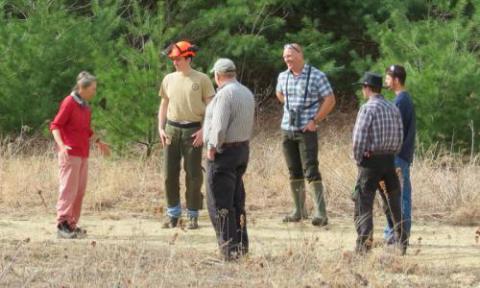 The author discussing the days plans with Matt Tarr, Don Quigley, and the students. |
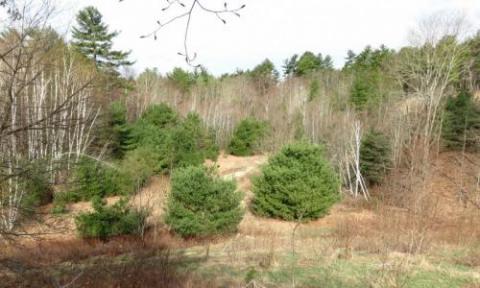 South bowl area before cutting. |
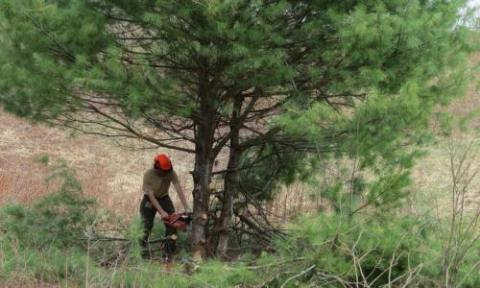 Cutting pine in the south bowl. |
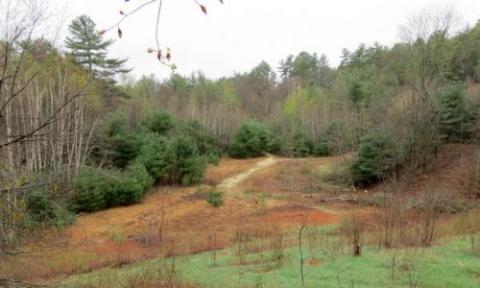 South bowl after cutting. |
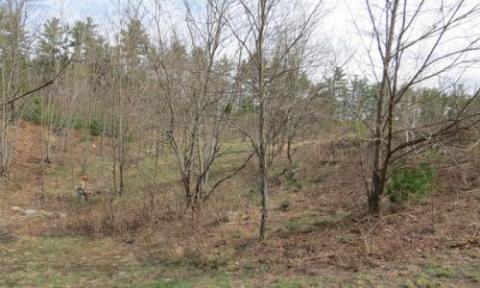 Black locust on north bowl slope before cutting. |
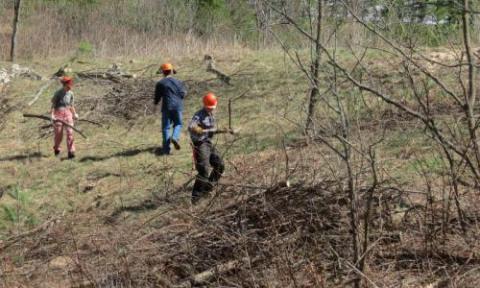 Three people pull brush after the one felling has moved to a new area. Three to one proved to be a good ratio. |
 North bowl slope with brush piled after cutting. |
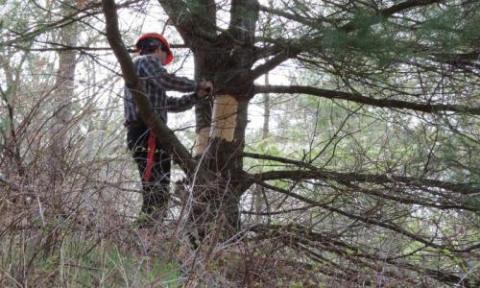 Girdling pines where cutting was difficult. |
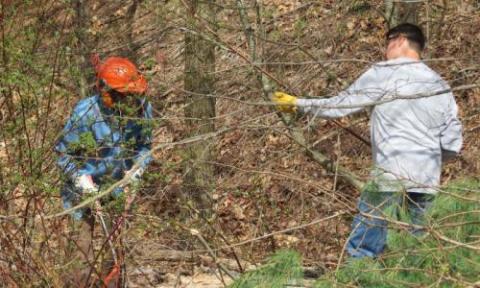 Invasive multiflora rose - one person cutting, one pulling. |
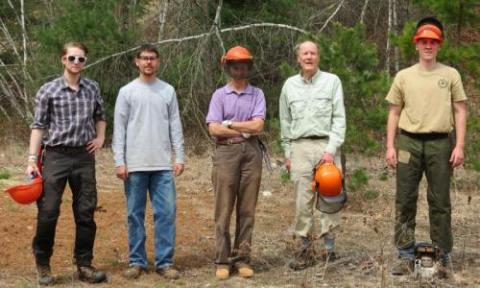 The crew at the end of the day, LCC members and students. |


